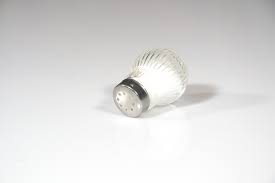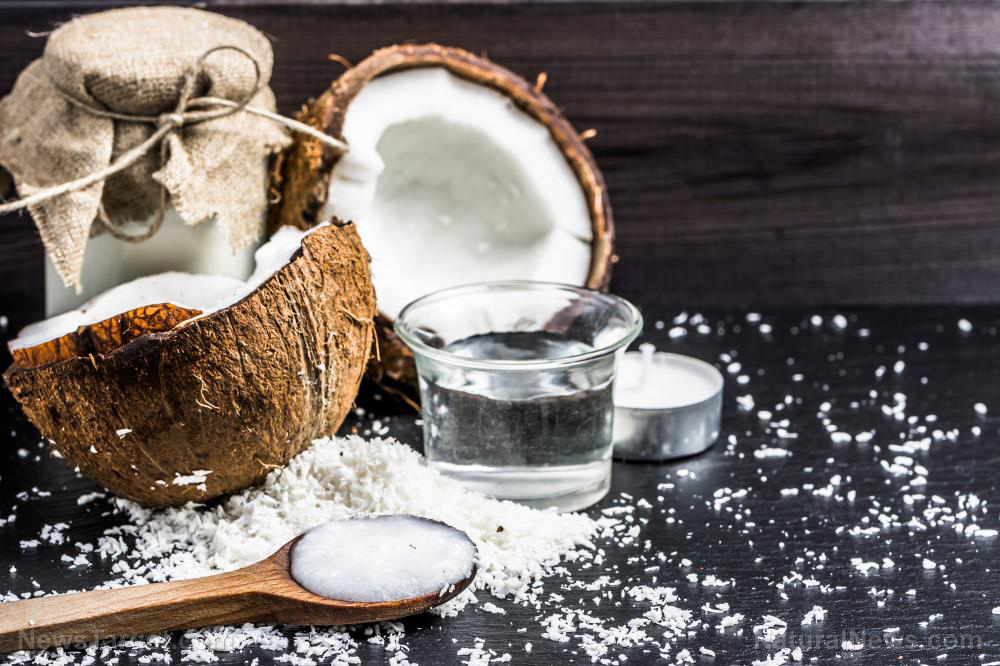Aluminum pollution: A silent threat to human health
03/28/2025 / By Olivia Cook

- Aluminum is everywhere – in food, water, cookware, cosmetics, antiperspirants and even vaccines. Long-term exposure may pose health risks.
- The brain may be at risk – studies have found high aluminum levels in patients with Alzheimer’s, autism and epilepsy.
- Infants are especially vulnerable – aluminum in milk formula, vaccines and intravenous nutrition could affect brain and bone development.
- Everyday products contribute to exposure – aluminum cookware, antiperspirants, processed foods and water can add to daily intake of aluminum.
- Reducing exposure is possible – choosing aluminum-free products, supporting breastfeeding and advocating for safer regulations can help protect overall health.
Aluminum is everywhere – in food, water, air and everyday products. It is the most abundant metal in the Earth’s crust, but its widespread presence in the environment has raised concerns about its potential health risks. While small amounts of aluminum are generally considered “safe,” overexposure has been linked to serious neurological and developmental disorders, bone diseases and risks for infants and children.
A recent review published in Environmental Science and Pollution Research highlights the growing body of evidence suggesting that chronic aluminum exposure could contribute to conditions like Alzheimer’s, autism and epilepsy, while also posing significant risks to infants and children through formula, intravenous feeding and vaccines. Yet, despite these concerns, regulatory efforts to reduce exposure remain limited and many consumers remain unaware of the risks.
Aluminum occurs naturally in rocks, soil and water. It is also commonly used in antiperspirants, cookware, cosmetics, food additives and medications. Water treatment plants use aluminum-based compounds as coagulants and processed foods often contain aluminum preservatives.
The World Health Organization (WHO) established a provisional tolerable weekly intake (PTWI) of 2 milligrams per kilogram of body weight, based on a no-observed-adverse-effect level (NOAEL) of 30 mg/kg body weight per day and the application of a safety factor of 100. This PTWI applies to all aluminum compounds in food, including food additives. Notably, the previous PTWI of 1 mg/kg body weight was withdrawn in 2011. (Related: RFK Jr. to axe FDA’s GRAS loophole, forcing scientific studies on a range of harmful food additives, including these 43 additives of concern.)
However, many people unknowingly exceed the amount due to cumulative exposure from various sources. Over time, aluminum can build up in the body, potentially leading to long-term health effects. The most vulnerable groups include infants, children, people with kidney disease (who cannot effectively eliminate aluminum) and the elderly.
The link between aluminum and brain diseases
One of the most alarming concerns is aluminum’s possible connection to neurodegenerative diseases. Research has detected high levels of aluminum in the brain tissue of Alzheimer’s patients, suggesting a possible role in cognitive decline.
A well-documented case study occurred in 1988 in Camelford, England, where 20,000 homes were exposed to aluminum sulfate-contaminated drinking water – the U.K.’s worst mass water poisoning. Years later, studies found these individuals had cognitive impairments and memory loss, with some developing Alzheimer’s disease symptoms. Similar studies have found aluminum deposits in the brains of people with autism and epilepsy, raising concerns about its role in neurological disorders.
Scientists believe aluminum may disrupt key brain functions, particularly in areas like the hippocampus, which is critical for learning and memory. However, the exact mechanisms remain unclear and researchers emphasize the need for further studies to confirm a direct cause-and-effect relationship.
Aluminum in formula, IV feeds and vaccines
Infants are among the most vulnerable to aluminum exposure, particularly through infant formula, intravenous nutrition and vaccinations.
Many baby formulas, especially soy-based varieties, contain significant amounts of aluminum. This is concerning because infants’ kidneys are not fully developed, making it harder for them to eliminate excess aluminum. Studies have shown that formula-fed babies accumulate aluminum in their brains and bones, raising concerns about long-term developmental effects.
Aluminum is also used as an adjuvant in vaccines to enhance immune response. While vaccine adjuvants have been deemed safe in small amounts, some experts worry that cumulative aluminum exposure from vaccines in early childhood could have unintended consequences, especially in premature and low-birth-weight babies. (Related: Research into aluminum toxicity KILLED because it exposed the dangers of childhood vaccines.)
Another major concern is intravenous (IV) nutrition, commonly given to premature, low-birth-weight or hospitalized infants who cannot feed orally. Parenteral nutrition solutions contain high levels of aluminum, which can accumulate in bones and the central nervous system (CNS), increasing the risk of osteomalacia (soft bones) and neurological damage. Studies have shown that adolescents who receive high aluminum IV nutrition in infancy have lower bone mineral density, putting them at greater risk of fractures in later life.
Everyday exposure: Antiperspirants, cookware and cosmetics
Aluminum is also a common ingredient in personal care products, particularly antiperspirants, where it works by blocking sweat glands. However, long-term absorption through the skin has raised health concerns. A case study on “hyperaluminemia” reported that women who used aluminum-containing antiperspirants for four years developed bone pain and chronic fatigue. After discontinuing use, symptoms improved and aluminum levels in blood and urine returned to normal.
Aluminum cookware and foil can also contribute to exposure, particularly when cooking acidic foods like tomatoes or citrus-based dishes. The metal can leach into food, further increasing daily intake.
To reduce aluminum exposure, consider taking the following steps:
- Choose aluminum-free products. Look for alternatives when buying cookware and personal care products like antiperspirants and cosmetics.
- Be mindful of food sources. Limit processed foods with aluminum additives, such as sodium aluminum sulfate (a leavening agent and potential neurotoxin), and avoid cooking acidic foods in aluminum cookware.
- Filter your water. Some home water filters can reduce aluminum levels.
- Breastfeed when possible. Data suggests that exclusive breastfeeding for at least six months may provide a protective effect, potentially helping infants metabolize and eliminate toxins more efficiently.
Researchers emphasize the need for stronger regulation, better product labeling and further studies to understand aluminum’s long-term health effects.
Watch this video to learn more about aluminum nanoparticles in vaccines.
This video is from the Sovereign Truth channel on Brighteon.com.
More related stories:
Aluminum can foil your good health: Do you use this neurotoxin in your kitchen?
A growing concern: Study highlights link between AUTISM and aluminum adjuvant in vaccines.
Aluminum is a key ingredient in MANY vaccines: Here’s why it’s so dangerous.
Sources include:
Submit a correction >>
Tagged Under:
Aluminum, Alzheimer's disease, autism, bone disorders, brain damage, brain health, clean food watch, Cosmetics, Dangerous, dementia, environment, food supply, health science, metals, poison, products, toxic chemicals, toxic ingredients, toxins, vaccine adjuvants, vaccines
This article may contain statements that reflect the opinion of the author
RECENT NEWS & ARTICLES
COPYRIGHT © 2017 INGREDIENTS NEWS



















